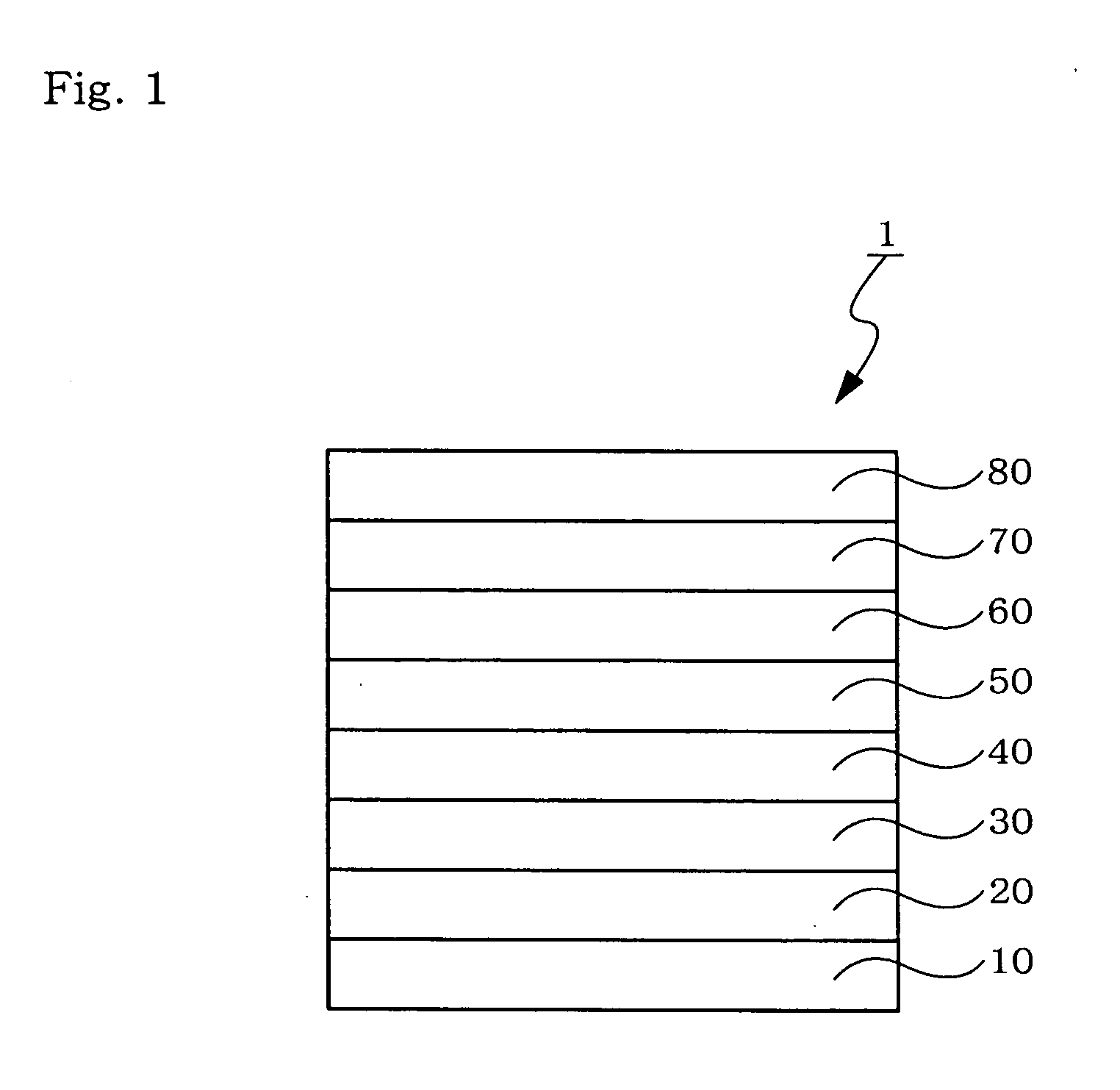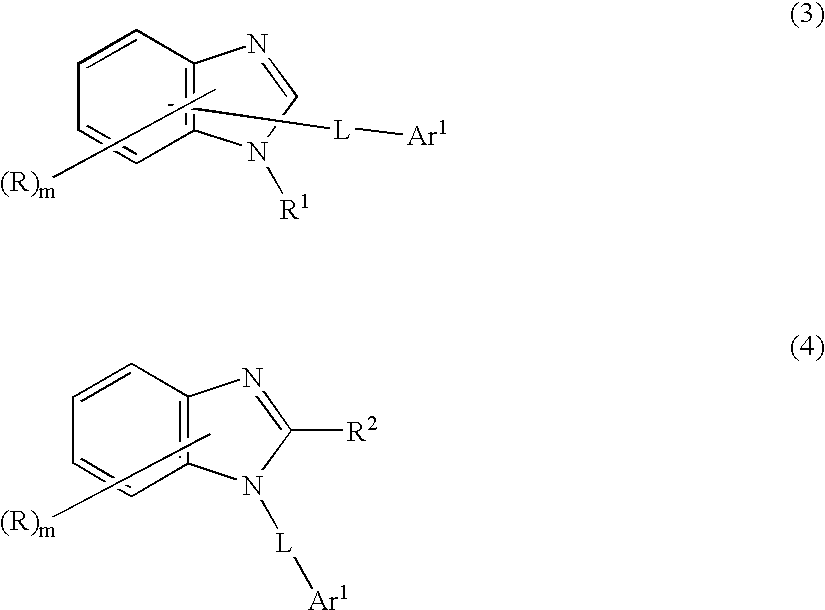Organic electroluminescent device
a technology of electroluminescent devices and electroluminescent lamps, which is applied in the direction of discharge tubes/lamp details, luminescent screens for discharge tubes, natural mineral layered products, etc., can solve the problems of insufficient red purity, insufficient half life of luminance, and insufficient luminous efficiency and lifetime, etc., to achieve high efficiency, high color purity, and the effect of longer life of the devi
- Summary
- Abstract
- Description
- Claims
- Application Information
AI Technical Summary
Benefits of technology
Problems solved by technology
Method used
Image
Examples
example 1
[0128] A 120 nm thick transparent electrode made of indium tin oxide was formed on a glass substrate measuring 25 mm×75 mm×0.7 mm. The glass substrate was subjected to ultrasonic cleaning in isopropyl alcohol for 5 minutes, and then subjected to UV ozone cleaning for 30 minutes. The glass substrate was placed in a vacuum deposition device.
[0129] First, as a hole-injection layer, N′,N″-bis[4-(diphenylamino)phenyl]-N′,N″-diphenylbiphenyl-4,4′-diamine was deposited to a thickness of 60 nm on the substrate. Then, as a hole-transporting layer, tetrakis-N-(4-biphenyl)benzidine was deposited to a thickness of 10 nm thereon. Next, as an emitting layer, the compound (A-1) of a naphthacene derivative below and the compound (B) of an indenoperylene derivative below were co-deposited to a thickness of 40 nm at a weight ratio of 40:0.4.
[0130] Next, as an electron-transporting layer, a compound (C-1) below was deposited to a thickness of 30 nm.
example 2
[0133] An organic EL device was fabricated in the same way as in Example 1 except that the compound (A-3) below of a diaminoanthracene derivative was used instead of the compound (A-1) when the emitting layer was formed.
[0134] When an electrical conduction test was performed for the device obtained, red emission with a driving voltage of 4.1 V and a luminance of 978 cd / m2 was obtained at a current density of 10 mA / cm2. Chromaticity coordinates were (0.67, 0.33), and a luminous efficiency was 9.78 cd / A. When a direct current continuous conduction test was performed at an initial luminance of 5,000 cd / m2, a half life was 2,000 hours.
PUM
| Property | Measurement | Unit |
|---|---|---|
| Fraction | aaaaa | aaaaa |
| Fraction | aaaaa | aaaaa |
| Energy | aaaaa | aaaaa |
Abstract
Description
Claims
Application Information
 Login to View More
Login to View More - R&D
- Intellectual Property
- Life Sciences
- Materials
- Tech Scout
- Unparalleled Data Quality
- Higher Quality Content
- 60% Fewer Hallucinations
Browse by: Latest US Patents, China's latest patents, Technical Efficacy Thesaurus, Application Domain, Technology Topic, Popular Technical Reports.
© 2025 PatSnap. All rights reserved.Legal|Privacy policy|Modern Slavery Act Transparency Statement|Sitemap|About US| Contact US: help@patsnap.com



